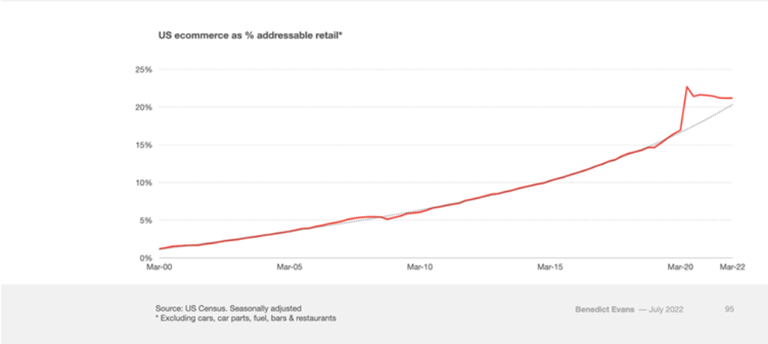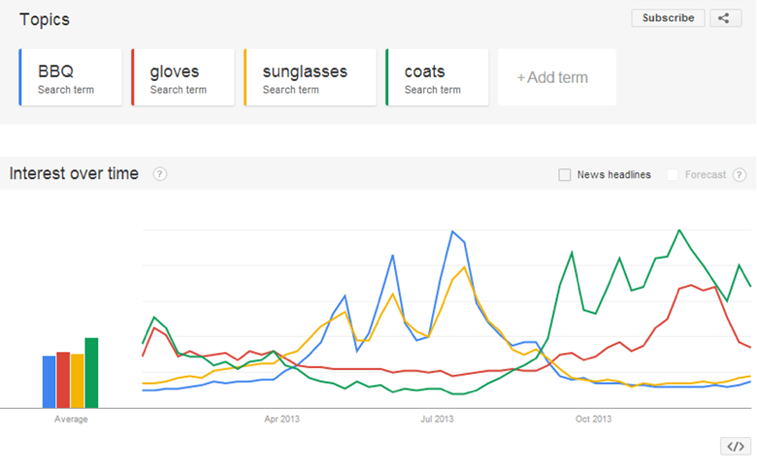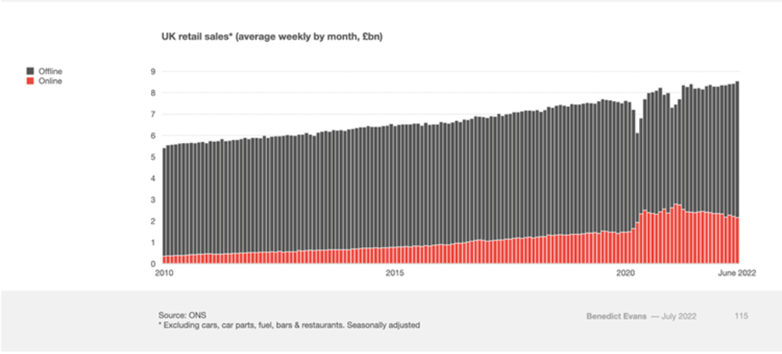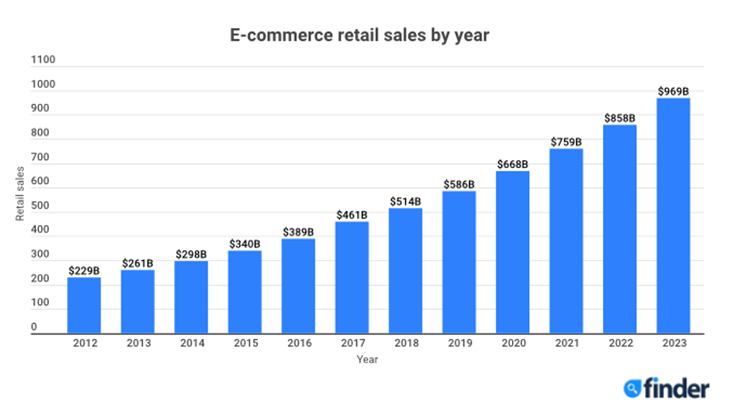Spring has Sprung… a Spike in your Ecommerce?
21 February 2023
In a world of global warming, it’s no secret that the weather can affect our everyday lives. But what if we told you, it went further than just our modes of transport or what thickness of coat to wear? The weather has historically also had a huge influence on the Retail / Ecommerce sector; and as weather conditions become more intense the world over, so too will consumer spending.
As with most consumer trends, weather is one that can swing to extremes. When the likes of Beast from the East hit in 2018, you can imagine there was a significant drop in consumer sales – we were slightly distracted. Versus the Spring of 2020, the height of Covid lockdowns, the sun was shining; so, you can imagine the sales of garden furniture and home improvement products went through the roof – we were stuck at home wanting to enjoy the space (see Image 1). Enough said.

[Image 1]
‘But minor weather changes can also have an impact – significant impacts. In the USA for example, 1/3 of all business activity has some form of weather sensitivity, with weather accounting for a swing factor of 3.4% of the total GDP. That's several hundred billion dollars.’
In the UK the retail industry can get hit particularly hard too. ‘A seasonal temperature just 1°C higher or lower than average typically causes a 1% fluctuation in sales. With the UK retail sector being valued at roughly £300bn, this would equate to a deviation of £3bn’ (weatherads.io). That’s big!

[Image 2]
Image 2 is a Google Trend chart showing the UK online search volume for 4 weather sensitive products. It highlights both the seasonal trends (BBQ’s and sunglasses in the summer, coats and gloves in winter) as well as weekly fluctuations as a result of shifting weather patterns.
As such, retailers can benefit greatly from weather-based advertising. By syncing product ads to match appropriate weather conditions, retailers can increase conversions and sales of their weather sensitive products, while also decreasing ad spend during periods of less favourable weather. It also drives home the value of ecommerce, which is less sensitive to foot traffic and weather conditions – people can simply purchase while rugged up warm at home… but we’ll come back to that later!
Research conducted in 2014 into the US retail sector’s susceptibility to weather variability showed that 2.3% of sales are weather-sensitive. Now while the world is a very different place in 2023, when these figures are transposed to the UK retail sector, the figures are still super relevant, and also pretty significant.
The numbers below indicate what portion of each retail sub-sector is associated with weather risk:
These stats highlight how certain sectors within the retail industry are more weather sensitive than others – for instance, perishable items like food, which have limited stock durations have far higher weather risk attached to them than, for instance, DIY goods or consumer electronics – where holding large volumes of stock is common practice.
‘This is where savvy marketers would use weather targeted advertising across their paid channels to boost their ad visibility during key weather moments, and automatically reduce ad spend during quieter periods.’ (weatherads.io)
With weather being notoriously inconsistent, and as we in the UK await the arrival of another Beast from the East, it begs the question… how do we find consistency in consumer behaviour? Ecommerce offers reach, value, and ultimately the most consistent environment for retail brands. Even through the turbulence of 2020, Image 3 shows that ecommerce remained consistent, and since then has shown consistent growth YoY:

[Image 3]
‘While shoppers are returning to brick and mortar, their ecommerce habits are set. Experts predict worldwide retail e-commerce sales will soar from about 5 trillion US dollars to just over 8 trillion dollars by 2026.’ (Image 4, Future of Ecommerce)

[Image 4]
So, what does all this mean for your E-Retail online marketing strategy? First and foremost, this data demonstrates the importance of leveraging weather targeting to contextualize marketing messages. Ecommerce businesses need to make the most of favourable spells of weather when they would expect to see a traffic and sales lift, by factoring this into their PPC, Paid Social and SEM bidding strategies.
‘Likewise, through real-time weather-responsive marketing, retail websites can leverage forecast information to anticipate periods of hot weather, reaching out to their audience to advise them to stock up on key products online before the weather arrives. By targeting consumers with relevant deals and promotions beforehand, online retailers can mitigate the negative impact good weather can have on their online sales, before it even hits them.’ (weatherads.io)
While we’re at it…
‘Social media platforms are becoming an increasingly important part of the ecommerce landscape as consumers use them for discovery, research, and even purchasing. Companies will need to incorporate social media into their ecommerce strategies to reach and engage with consumers.
According to The Future of Commerce, “Global sales via social media platforms were estimated at 992 billion U.S. dollars in 2022, and forecasts suggest that social commerce sales will reach around 2.9 trillion U.S. dollars by 2026. Social commerce is critical for brands to reach their target audiences and is expected to generate $30.73 billion in sales in 2023, accounting for 20% of global retail e-commerce sales.”
Incorporating an influencer marketing strategy is another way to leverage the benefits of social commerce. Working with an influencer allows businesses to engage with pre-qualified customers. This strategy can increase engagement and conversion rates. Social proof from social media influencer marketing campaigns often turns leads into sales.’ (Forbes)
Loud Mouth Media are Ecommerce specialists across all Digital Advertising channels, so if you’re looking to drive digital growth for your brand; make sure to get in touch with our expert team today. Spring is around the corner, so too is warmer weather, and we now know – consumer spending is too. Get ahead of your competition!